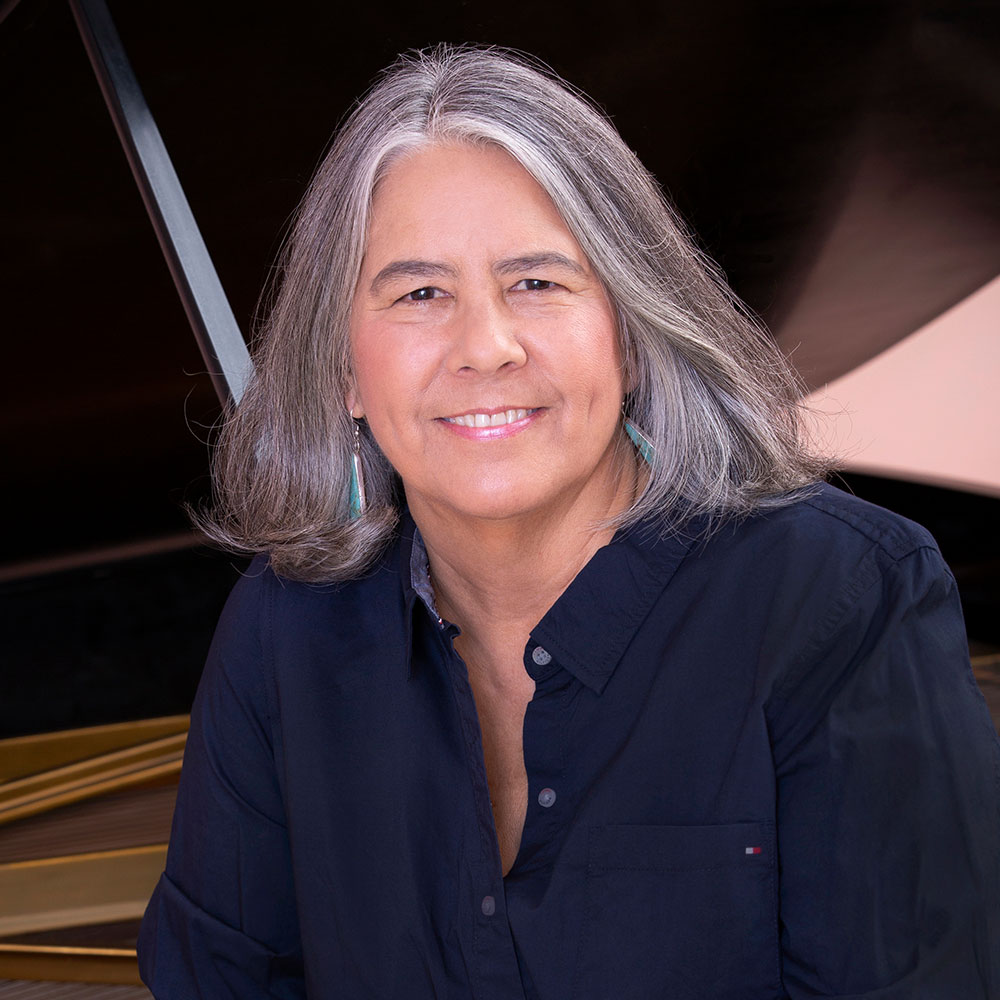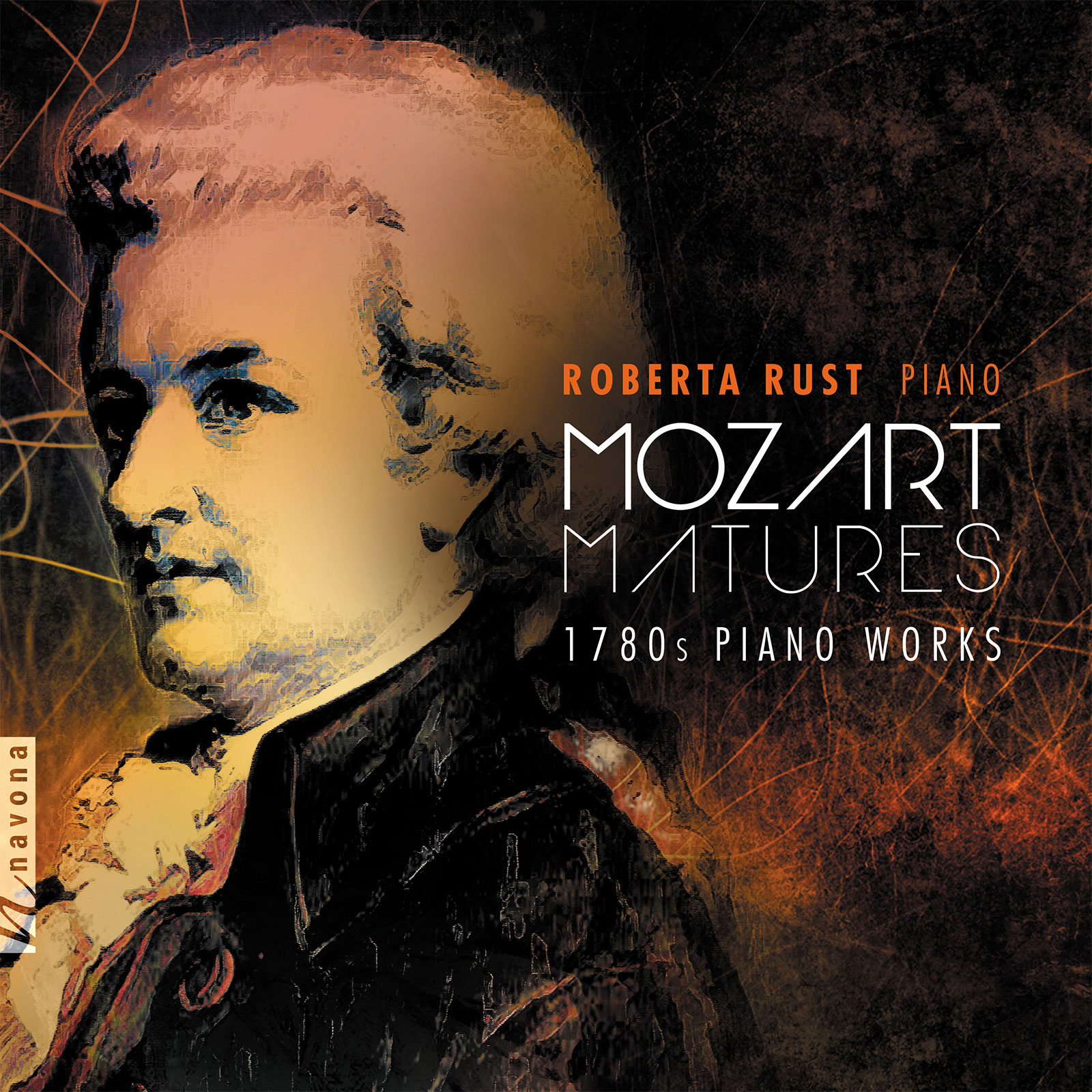
On MOZART MATURES: 1780s Piano Works, pianist Roberta Rust perceptively explores Mozart’s personal artistic journey and progression from an extraordinary talent to an immortal giant of musical composition. Largely eschewing the popular tunes, Rust instead carefully handpicked musical selections designed to showcase the composer’s structural, technical, and harmonic development.
Today, Roberta is our featured artist in “The Inside Story,” a blog series exploring the inner workings and personalities of our composers and performers. Read on to learn about the unique vantage point she had in her first concert experiences, and the joy she finds in reading and live theater…
Do you have any specific hopes about what this album will mean to listeners?
During the last decade of Mozart’s life his artistic contributions became more chromatic, contrapuntal, and emotionally complex. This album hopes to bring this expressive dimension and developmental maturation of the composer to the fore in performances of some of his piano music from the 1780s.
What were your first musical experiences?
Probably music I heard in church. I was raised in a devout Roman Catholic family and during my childhood one had to fast before going to communion at Mass. My parents, both raised in rural settings in South Dakota, were early risers, so we always went to a very early Sunday morning Mass, well before breakfast. Upon returning home, mother would prepare breakfast and my siblings and I would gather in the living room and play my parent’s collection of LPs and 45s on the record player, which included many classics (Rossini’s William Tell Overture, Van Cliburn’s performance of the Tchaikovsky Piano Concerto No. 1, J.S. Bach’s Air on the G String, etc.) and also some Mantovani. This was a very joyful introduction to some great music and we would dance and march around the living room, sometimes striking pots and pans along with the music.
What was the first performance you remember seeing?
The Houston Symphony with Sir John Barbirolli conducting. The Houston Chronicle sponsored $1 concerts in the 1960s and my dad would buy tickets and take us to the Sam Houston Coliseum in downtown Houston to hear the orchestra. There were seats behind the orchestra, so we sat behind the percussion section, facing the conductor, and could hear and see the concert from that vantage point, which was exciting and engaging.
Tell us about your first performance.
I began studying the piano at age 5 (before I attended school) with Laura Burris at her apartment on Wirt Road in Houston TX. She was born in the late 19th century. I participated in my first student recital, with other young pianists, at a lovely two-story home in Houston which had a staircase. Each performer was to sit in order on the steps of the staircase, until it was their turn to play. I recall playing three pieces, one of which was Beethoven’s Minuet in G (WoO 10 No. 2). This would have been during my first year of study.
What are your other passions besides music?
I love my family and friends. Belonging to two book clubs for over 20 years is testament to my enjoyment of reading. My favorite art form after music is live theater — watching plays and their actors has always fascinated me. Watching movies and quality television series such as those from the 21st century (The Sopranos, The Queen’s Gambit, Downton Abbey, Better Call Saul, House of Cards, The West Wing, and Ozark) and from the 1970s (I, Claudius and Upstairs, Downstairs) is a relaxing pastime.
What advice do you have for young musicians?
For young musicians who wish to follow a professional path in music performance, I advise them to do so only if they think they would be miserable doing anything else. It is a difficult path and without an almost religious and fervent conviction, it can be hard to make a contribution and lead a fulfilling life in the profession. Also, young musicians should ask themselves how they can serve the art form and realize there are many ways to serve music.

Roberta Rust has concertized to critical acclaim around the globe, with performances at such venues as Carnegie Hall's Weill Recital Hall, New York's Merkin Concert Hall, Rio de Janeiro's Sala Cecília Meireles, Washington's Corcoran Gallery, Havana’s Basilica, and Seoul's KNUA Hall. Hailed for her recordings on PARMA (Navona), Centaur, and Protone labels, Rust has appeared with the Lark, Ying, Serafin, Amernet, and Fine Arts String Quartets and at Miami's Mainly Mozart Festival, the Philippines Opusfest, the Palm Beach Chamber Music Festival, Festival Miami, Long Island's Beethoven Festival, and France's La Gesse.

